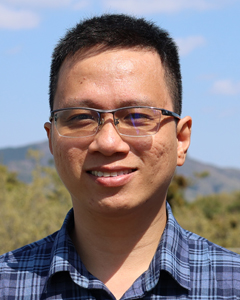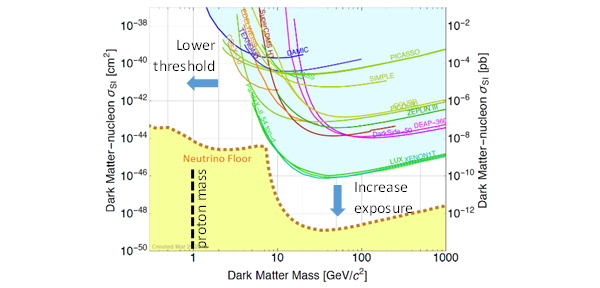

Members
Member List

Bui Tuan Khai
QUP Postdoctoral Fellow
e-mailbtkhai-at-post.kek.jp
An experimental physicist who loves to work on low-background techniques to search for rare events. In the past, I worked in the CANDLES experiment set up at Kamioka Underground lab to search for the neutrinoless double beta decay of Ca-48. After CANDLES, I moved to Kavli IPMU and was involved in commissioning the neutron veto subsystem of the XENONnT experiment, in which the main target is to directly detect the weakly interactive massive particle (WIMP) - as a theoretical candidate of dark matter (DM).
Research Content
The existence of DM in the universe is widely accepted. The discovery of basic properties of DM via direct detection techniques is one of the most important subjects in astrophysics and particle physics. The hypothesis of the WIMP as the DM particle is well-motivated theoretically and has gained much interest in DM direct detection experimental research. The quantum chromodynamics (QCD) axion has also been recognized as another compelling DM candidate with less experimental interest. Over the past decade, as initial searches for DM have shown no results, significant advances in DM theory have emphasized that, besides the QCD axion, there are many other compelling non-WIMP dark matter candidates. Most of these experiments have a lower sensitivity limit above the proton mass (1 GeV/c2).
The light-blue region in Fig. 1 is the excluded region by the current experiments, and the light-yellow region is the theoretical lower limit on the WIMP-like DM model, known as the neutrino floor. To extend the sensitivity of DM search, one approach is to continue the current experimental methods with increased exposure (e.g., XENON1T->XENONnT, LUX+ZEPLIN->LZ, XENON+LZ+DARWIN->XLZD). I am interested in another approach, which is to extend the DM search region below 1 GeV/c2, which requires advanced detection technology to lower thresholds. I have just come to QUP. Together with other QUPids, I will work on a new experiment commissioned at Kamioka to search for sub-GeV DM using the Transition Edge Sensor (TES) technology. I am very excited to see our first data set and explore the sensitivity in the low DM mass.

[Fig. 1. DM-nucleon interaction cross-section]
Related Research Results
https://orcid.org/0000-0003-2959-3906
